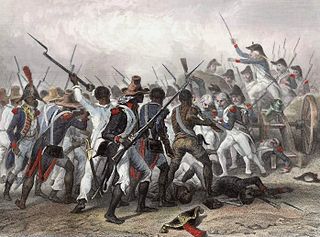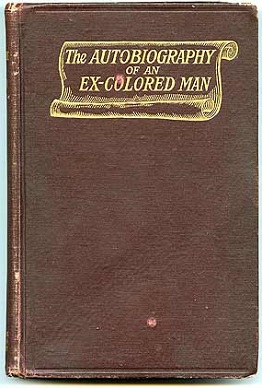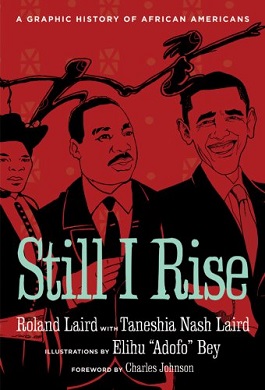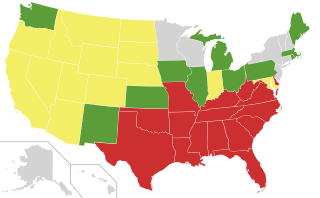Authors’ and Illustrator Background
Roland and Taneshia Laird
Roland Laird passed away in 2013. [3] Roland Laird grew up in New York, and graduated from Brown University. At Brown, he co-founded the NY Chapter of Brown University’s Page Black Alumni Council. Roland Laird is the founder and CEO of Posro Media, an entertainment production company that explores African American history and culture in a variety of formats, including comics, books, radio, video, and film. [4] Posro projects' positive imagery is designed to stand in sharp counterpoint to the mass media's often unrealistic and misleading portraits of the African American community. [5] Roland’s wife, Taneshia Nash Laird is a co-author of the book Still I Rise. Taneshia graduated from Baruch College in New York City, and was the marketing director for Posro Media, the company founded by her husband. Taneshia currently lives in West Windsor, New Jersey with her two daughters [6]
Elihu Adofo Bey
Elihu Adofo Bey is the illustrator for Still I Rise. Elihu started reading comic books when he was 6, and has been drawing ever since. Bey has previously stated that black comic artists traditionally have drawn white characters or, at best, black characters who fall into the superhero stereotype. [7] "I want my drawings to convey emotion and spirituality," he said. "I want to portray black people as they really are."
Charles Johnson
Charles Johnson is responsible for the introduction of the book. Charles Johnson is the author of four novels Faith and the Good Thing (1974), Oxherding Tale (1982), Middle Passage (1990), and Dreamer (Scribner, 1998). A former director of the creative writing program at the University of Washington, he has written over 20 screenplays, published over 50 reviews, and has lectured in 9 countries as well as being a regular speaker at American campuses. [8] Charles Johnson points out in his introduction, the history of African American cartooning runs very deep, yet is almost unknown. “Still I Rise is a great contribution. It not only tells history, it makes history.”
Plot Summary
Still I Rise begins with an introduction by Charles Johnson about black cartoonists and the subjects they dealt with. The book uses two elderly narrators, one male and one female, to take the reader through time. The female narrator has a bit of black nationalism, while the male narrator has a more balanced view of America in terms of race relations. The book beings to depict African American history starting in 1618. Around this time, in an effort to stem the rising cost of European indentured servants, Africans willing to indenture themselves were starting to be imported. These African servants did very well for themselves because they were more skilled than their European counterparts. The success of the African Americans sparked resentment in white indentured servants and free whites, who disliked the idea of a black man ordering around a white man. Due to their success, Africans started to buy out their contracts, which prompted owners to illegally lengthen African contracts to ban the buy-out problem. The action of the owners angered the African American servants, causing many of them to try and resort to the legal system or simply running away. However, neither of these options worked, and those who ran away had their contracts extended indefinitely. Running out of options, the black servants resorted to rebellion in the form of Bacon's Rebellion in 1676. However, the rebellion was put down, and by 1677 slavery was official in all the colonies, with brutal overseers being hired to keep the slaves in line. Still I Rise continues through the history of slavery, outlining ways in which the slaves coped (or didn't cope) with their lot, as well as the hard-won successes of free blacks such as Benjamin Banneker, who "built the first striking clock wholly of American-made parts. [9] From the beginning of the cartoon narrative, every major American black political movement, historical event, and organization is covered, as well as the achievements of African American inventors and businesspeople.

Northampton County is a county located in the Commonwealth of Virginia. As of the 2020 census, the population was 12,282. Its county seat is Eastville. Northampton and Accomack Counties are a part of the larger Eastern Shore of Virginia.

Slavery in the colonial history of the United States refers to the institution of slavery as it existed in the European colonies which eventually became part of the United States. In these colonies, slavery developed due to a combination of factors, primarily the labour demands for establishing and maintaining European colonies, which had resulted in the Atlantic slave trade. Slavery existed in every European colony in the Americas during the early modern period, and both Africans and indigenous peoples were victims of enslavement by European colonizers during the era.

Gabriel's Rebellion was a planned slave rebellion in the Richmond, Virginia, area in the summer of 1800. Information regarding the revolt, which came to be known as "Gabriel's Rebellion," was leaked prior to its execution, and Gabriel, an enslaved blacksmith who planned the event, and twenty-five of his followers were hanged. The site of Gabriel's execution was, for several years, believed to have been at the Shockoe Bottom African Burial Ground, historically known as the Burial Ground for Negroes. His execution was advertised as occurring at the usual place; however, in 1800, that may have been a location other than the Burial Ground for Negroes. The location of Gabriel's burial is also unknown.

Charles Richard Johnson is a scholar and the author of novels, short stories, screen-and-teleplays, and essays, most often with a philosophical orientation. Johnson has directly addressed the issues of black life in America in novels such as Dreamer and Middle Passage. Johnson was born in 1948 in Evanston, Illinois, and spent most of his career at the University of Washington in Seattle.

Kevin Brooks Eastman is an American comic book artist and writer best known for co-creating the Teenage Mutant Ninja Turtles with Peter Laird. Eastman was also formerly the editor and publisher of the magazine Heavy Metal.

The Autobiography of an Ex-Colored Man (1912/1927) by James Weldon Johnson is the fictional account of a young biracial man, referred to only as the "Ex-Colored Man", living in post-Reconstruction era America in the late nineteenth and early twentieth centuries. He lives through a variety of experiences, including witnessing a lynching, that convince him to "pass" as white to secure his safety and advancement, but he feels as if he has given up his dream of "glorifying" the black race by composing ragtime music.

Compensated emancipation was a method of ending slavery, under which the enslaved person's owner received compensation from the government in exchange for manumitting the slave. This could be monetary, and it could allow the owner to retain the slave for a period of labor as an indentured servant. Cash compensation rarely was equal to the slave's market value.

John Casor, a servant in Northampton County in the Virginia Colony, in 1655 became the first person of African descent and second person in the Thirteen Colonies to be declared as a slave for life as a result of a civil suit. In 1662, the Virginia Colony passed a law incorporating the principle of partus sequitur ventrem, ruling that children of enslaved mothers would be born into slavery, regardless of their father's race or status. This was in contradiction to English common law for English subjects, which based a child's status on that of the father. In 1699 the Virginia House of Burgesses passed a law deporting all free black people. But many new families of free black people continued to be formed during the colonial years by the close relationships among the working class.

Anthony Johnson was an Angolan-born man who achieved wealth in the early 17th-century Colony of Virginia. Held as an indentured servant in 1621, he earned his freedom after several years, and was granted land by the colony.

Daniel Coker (1780–1846), born Isaac Wright, was an African American of mixed race from Baltimore, Maryland; after he gained freedom from slavery, he became a Methodist minister. He wrote one of the few pamphlets published in the South that protested against slavery and supported abolition. In 1816 he helped found the African Methodist Episcopal Church, the first independent black denomination in the United States, at its first national convention in Philadelphia.

Still I Rise: A Graphic History of African Americans is a pictorial and historical-cultural narrative chronicling the struggles and triumphs of African Americans. The book was published by Sterling Publishing in February 2009. Co-authored by husband and wife team Roland Laird and Taneshia Nash Laird, with a foreword by Charles R. Johnson, it is an update of the original text, Still I Rise: A Cartoon History of African Americans. Published in 1997, A Cartoon History depicts through the use of cartoon illustrations the historical journey of African Americans, from pre-colonial America to the present.

Slavery among Native Americans in the United States includes slavery by and slavery of Native Americans roughly within what is currently the United States of America.

Slavery in Virginia began with the capture and enslavement of Native Americans during the early days of the English Colony of Virginia and through the late eighteenth century. They primarily worked in tobacco fields. Africans were first brought to colonial Virginia in 1619, when 20 Africans from present-day Angola arrived in Virginia aboard the ship The White Lion.
Still I Rise may refer to:
Buckra or Backra is a term of West African origin. It is mainly used in the Caribbean and in the Southeast United States. Originally, it was used by slaves to address their white slave master. Later the meaning was broadened to describe white people in general.

In the United States, anti-miscegenation laws were passed by most states to prohibit interracial marriage, and in some cases also prohibit interracial sexual relations. Some such laws predate the establishment of the United States, some dating to the later 17th or early 18th century, a century or more after the complete racialization of slavery. Nine states never enacted such laws; 25 states had repealed their laws by 1967, when the United States Supreme Court ruled in Loving v. Virginia that such laws were unconstitutional in the remaining 16 states. The term miscegenation was first used in 1863, during the American Civil War, by journalists to discredit the abolitionist movement by stirring up debate over the prospect of interracial marriage after the abolition of slavery.
John Punch was an enslaved African who lived in the colony of Virginia. Thought to have been an indentured servant, Punch attempted to escape to Maryland and was sentenced in July 1640 by the Virginia Governor's Council to serve as a slave for the remainder of his life. Two European men who ran away with him received a lighter sentence of extended indentured servitude. For this reason, some historians consider John Punch the "first official slave in the English colonies," and his case as the "first legal sanctioning of lifelong slavery in the Chesapeake." Some historians also consider this to be one of the first legal distinctions between Europeans and Africans made in the colony, and a key milestone in the development of the institution of slavery in the United States.

Irish indentured servants were Irish people who became indentured servants in territories under the control of the British Empire, such as the British West Indies, British North America and later Australia.

The Irish slaves myth is a fringe pseudohistorical narrative that conflates the penal transportation and indentured servitude of Irish people during the 17th and 18th centuries, with the hereditary chattel slavery experienced by the forebears of the African diaspora. Some white nationalists, and others who want to minimize the effects of hereditary chattel slavery on Africans and their descendants, have used this false equivalence to deny racism against African Americans or claim that African Americans are too vocal in seeking justice for historical grievances. It also can hide the facts around Irish involvement in the transatlantic slave trade. The myth has been in circulation since at least the 1990s and has been disseminated in online memes and social media debates. According to historians Jerome S. Handler and Matthew C. Reilly, "it is misleading, if not erroneous, to apply the term 'slave' to Irish and other indentured servants in early Barbados". In 2016, academics and Irish historians wrote to condemn the myth.
Mary Bateman Clark (1795–1840) was an American woman, born into slavery, who was taken to Indiana Territory. She was forced to become an indentured servant, even though the Northwest Ordinance prohibited slavery. She was sold in 1816, the same year that the Constitution of Indiana prohibited slavery and indentured servitude. In 1821, attorney Amory Kinney represented her as she fought for her freedom in the courts. After losing the case in the Circuit Court, she appealed to the Indiana Supreme Court in the case of Mary Clark v. G.W. Johnston. She won her freedom with the precedent-setting decision against indentured servitude in Indiana. The documentary, Mary Bateman Clark: A Woman of Colour and Courage, tells the story of her life and fight for freedom.














